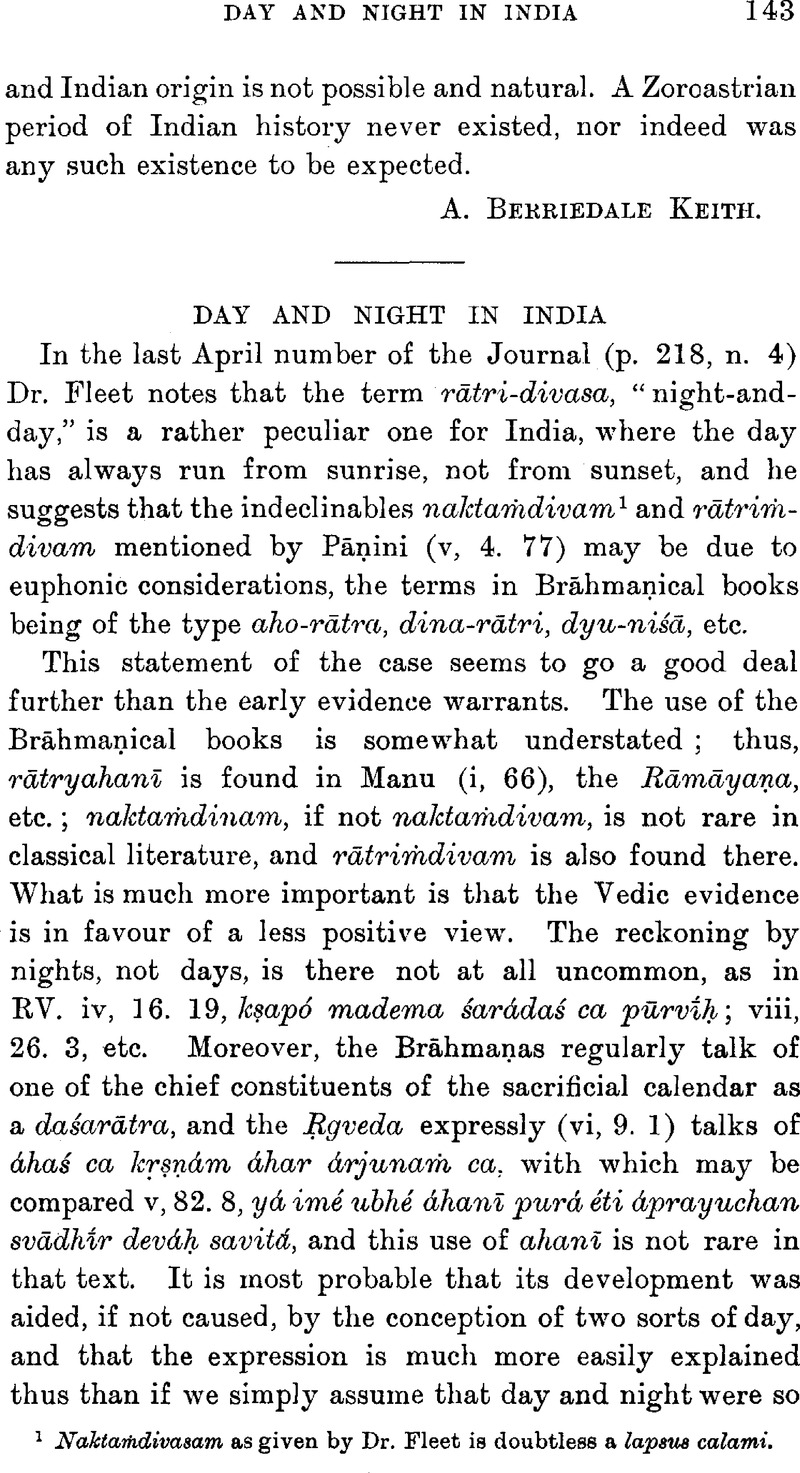Article contents
Day and Night in India
Published online by Cambridge University Press: 15 March 2011
Abstract

- Type
- Miscellaneous Communications
- Information
- Copyright
- Copyright © The Royal Asiatic Society 1916
References
page 143 note 1 Naktaṁdivasam as given by Dr. Fleet is doubtless a lapsus calami.
page 144 note 1 See JRAS. 1913, pp. 677–80.Google Scholar
page 144 note 2 Bell. Gall, vi, 18.Google Scholar
page 144 note 3 Germania, 11.Google Scholar
page 144 note 4 Macrobius, , Sat. i, 3Google Scholar; Gellius, , iii, 2.Google Scholar
page 144 note 5 Cf. Zimmer, , Altindisches Leben, p. 360Google Scholar; Hirt, , Die. Indo-germanen, ii, 540Google Scholar; Feist, , Kultur der Indo-germanen, pp. 260, 261.Google Scholar
page 145 note 1 draṣṭā may be passive or active here, the latter being supported by one reading in Āpastamba Paribhāṣāsūtra, 69Google Scholar, but the passive suits best the parallel dṛśyeta, which is of course the common generic optative. For the passive use see Speyer, , ZDMG. lxiv, 316, 317Google Scholar, who gives classical examples.
page 145 note 2 It is really impossible, it seems to me, despite Weber, (Jyotiṣa, pp. 51 seqq. )Google Scholar and Oldenberg, (SBE. xxx, 26)Google Scholar to equate the terms of the Brāhmaṇa and of the Sūtra: the former evidently treats the two paurṇamāsīs as (1) that night prior to (2) which is when the moon rises about sunset; the Sūtra has as (1) the time when the moon rises about sunset, and as (2) when it rises after sunset. Similarly the Brāhmaṇa has as amā-vāsyās (1) anirjñāya purastād amāvāsyāyāṁ candramasam, and (2) the next night; the account in (1) is really = the second of the Sūtra; the term anirjñāya cannot be taken as śāstramārgeṇa … niścitya (cf. Sāyāṇa, on the corrupt Aitareya Brāhmaṇa, vii, 11)Google Scholar, as can easily be seen from Baudhāyana Śrauta Sūtra, i, 1Google Scholar. The fact is that the Upavasatha really applies to the night only (cf. Taittirīya Saṁhitā, i, 6. 7. 3Google Scholar; Śatapatha Brāhmaṇa, i, 1. 1. 7)Google Scholar, but naturally the preparatory rites of the daytime before and the night ritual come to be regarded as closely connected as a day's performance. Purastāt, which can hardly mean “before (sunset)”, may mean “in the east”; the former sense perhaps explains the word in Āpastamba, I.c. (SBE. xxx, 333)Google Scholar, where it is unintelligible. Āpastamba agrees with the Brāhmaṇa in its choice of full moon nights. Gobhila (i. 5. 1 seqq. ) agrees with Śāṅkháyana.
page 146 note 1 See Böhtlingk, , Pāṇini, p. xviii.Google Scholar
- 1
- Cited by




